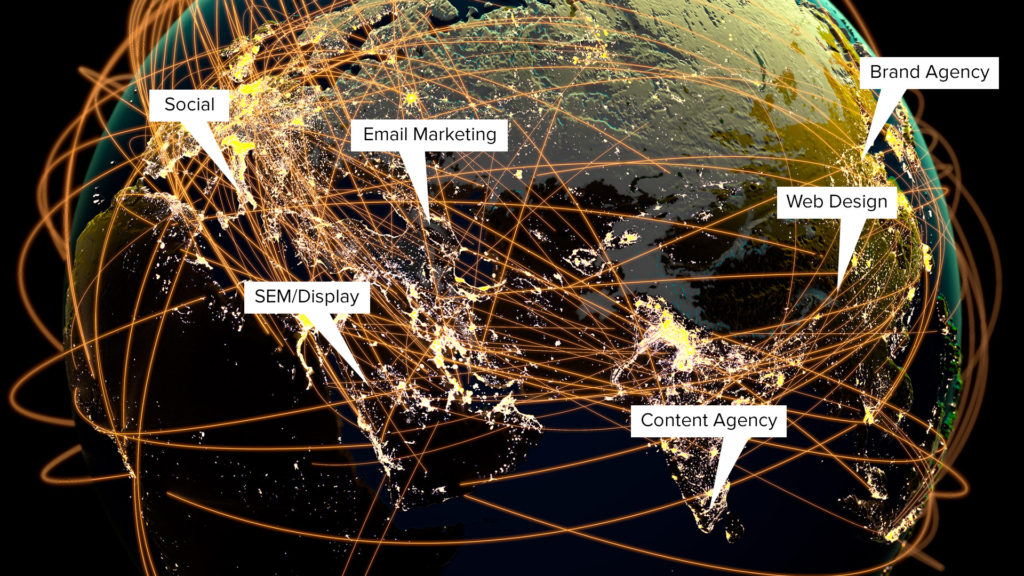Today’s business world is changing faster than ever. Marketers are required to produce faster, often with limited budgets. This means getting to market more quickly, but at no extra cost.
Yet, not all marketing agencies have adapted their approach to this ever-changing environment. Traditional marketing methods tend to be somewhat formulaic and full of unnecessary steps. Marketers are finding that these old-fashioned strategies are no longer effective in today’s rapid-fire world.
Luckily, a new way of thinking has solved the drawbacks of traditional strategies. This new approach is ‘agile marketing.’
What is agile marketing?
Agile marketing is an approach that values collaboration, responsiveness, and continuous testing. Inspired by Agile software development, agile marketing is able to respond to changing requirements and increase campaign success by breaking down large projects into smaller, more manageable segments. Each segment is tested repeatedly, so mistakes are found, and fixed, earlier in the process. This eliminates the need for unnecessary risks and improves the final result.
Components of agile marketing
- Responsive – it responds quickly to change and offers flexibility
- Iterative – it breaks large projects into a series of iterations, allowing for repetitions of an action until improvements are achieved
- Experimental – it continuously tests the increments to see what works, avoiding large risks
- Collaborative – it values collaboration over hierarchy, welcoming client involvement and responding to feedback
You could say that agile marketing involves taking a series of smaller risks, and delivering the goods in bite-size pieces. The beauty of this is that failure and mistakes can be accommodated along the way – as long as we learn from them.
How to be agile
- Focus – rather than becoming overwhelmed by a massive project, focus on the current task at hand in order to deliver fast results
- Clarity – have a clear goal in order to steer clear of overwhelming methodologies
- Teamwork – value collaboration by maintaining strong communication, which reduces misunderstandings and missteps
- Results – be results-focussed to avoid the unnecessary steps of traditional marketing methods
- Fail fast, learn fast – use rigorous testing to record failures, adjust quickly, and improve results
- Transparency – execute projects with the involvement and input of the client to ensure that your ideas of success are synonymous
Agile terminology explained
- Sprints – A sprint is the length of time you allow your team to complete their current projects, typically ranging from two to six weeks. Larger initiatives may not fit into a single sprint, so these are broken down into small, manageable pieces that you can tackle sprint by sprint.
- Stand up meetings – When employing agile marketing, your team will meet briefly each day. Each team member explains what they completed the day before, what they’ll complete today, and the blocks they’ve encountered. Any blocks should be addressed immediately.
- Progress board – Whether it’s a wall of sticky notes, a simple Trello board, or a fancy piece of software, you need a centralised way for the team to track your sprint.
- Teamwork – While an individual may “own” a project, the success or failure of the sprint rests on ALL the team members. Everybody has to be prepared to collaborate and assist in the agile framework.
Why an agile marketing team is essential for brands
Learning how to implement an agile approach takes time. Partnering with a team equipped with the right knowledge gives brands the benefits of agile marketing without the need for training.
An agile marketing team is able to:
- Respond quickly to changes in the market. This involves altering our way of thinking to one that is more flexible.
- Produce campaigns that can be tested and optimised over time, as opposed to waiting for the end results.
- Try different approaches, repeating and optimising the ones that succeed, and discarding the ones that don’t.
- Use input from other departments to augment our marketing efforts.
- Justify campaign choices with hard data, rather than relying on guesswork, convention, or even past experience.
- Collaborate with team members to prevent a tunnel-vision approach to marketing.
Agile marketing provides valuable benefits to brands. One of its main benefits is avoiding large risks. With agile marketing, you won’t need to make big bets because it’s able to take the guesswork out of big campaigns.
An agile approach also allows for faster, more effective campaigns. To keep up with industry demand, brands must adopt an agile approach, which divides campaigns into more manageable pieces. Campaigns are progressed faster, messages are made stronger, and impact is made bigger.
Segmenting large campaigns also allows us to adapt to an ever-changing market. Some traditional campaigns take months to plan and even longer to run their cycle. A lot can change in a matter of months, which is why agile marketing’s campaign breakdown provides the flexibility to adapt as a campaign is forming.
Agile marketing is incredibly flexible and adaptable, so an agile marketing team can make its principles work for each and every brand. Brands are able to complete bigger projects, produce more productive launches, and communicate stronger messages, all by partnering with the right team. In a marketing environment that becomes more complex by the day, an agile team-equipped team will reduce your risk while saving you previous time and money, and that is crucial for today’s brands.
Why we love being agile
Here at The Walk, we’re a unique combination of marketers and software developers, and together we’ve learned a thing or two about agile development.
We have gained so much from agile marketing that it’s become part of how we operate the marketing agency side of our business. Bringing agile methods to our marketing has helped speed-up our projects whilst simultaneously improving the quality of our work.
AWS Game On: a real-life example of agile marketing
We recently produced a campaign for Amazon Web Services and were able to deliver the project within one week – despite the initial plan being for three weeks from strategy to execution to launch. Go on, ask us how we did it.
Everyone could use a bit of agility. Contact us today to learn how our agile approach to marketing could benefit your brand.





Be the first to comment on "Game on – the rise of agile marketing"